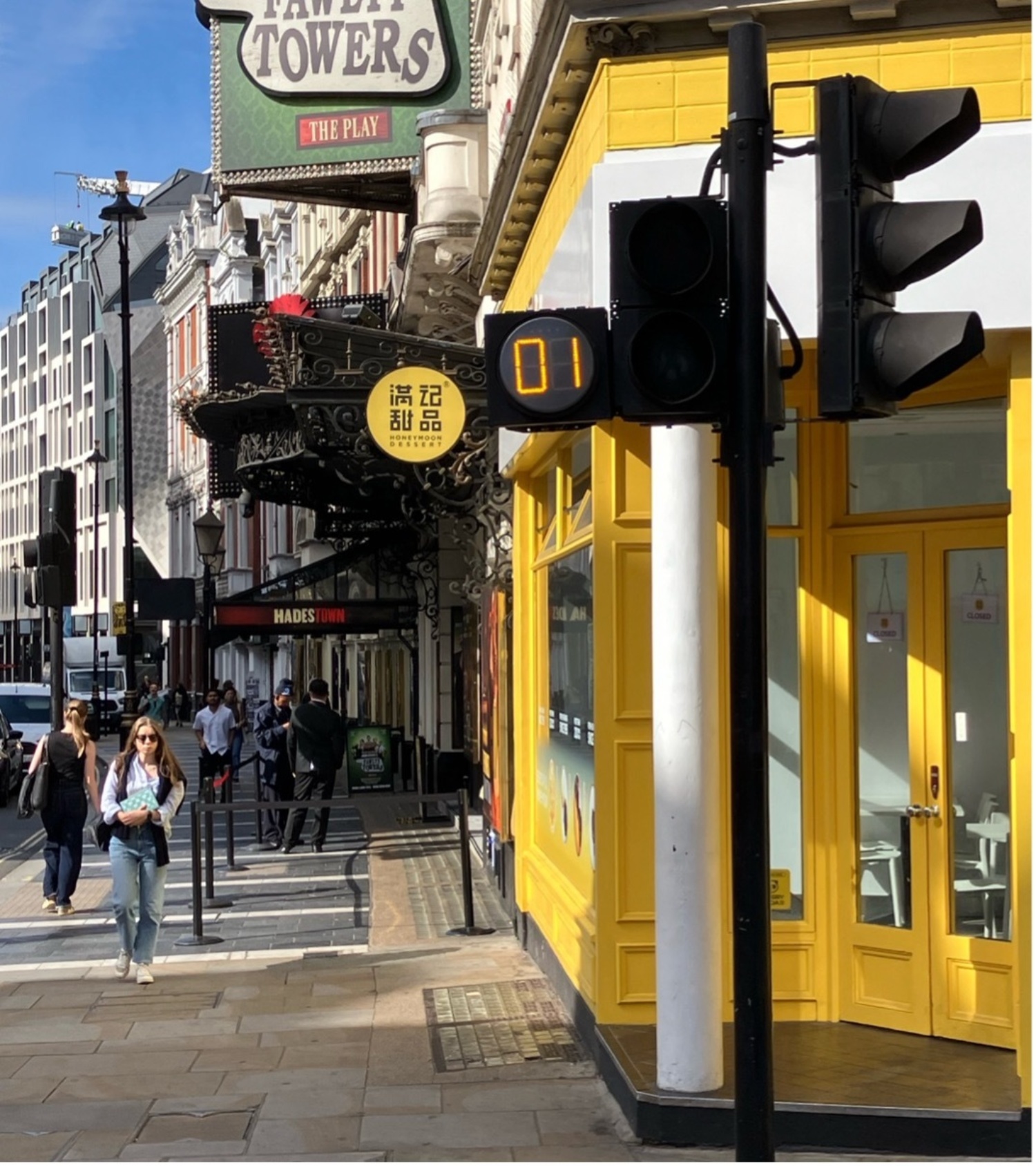
I nearly got run over by a Lime Bike this morning. I was laser focused on getting across the road as the countdown ticked towards zero and didn’t see him coming.
The rider shouted angrily at me as he hurtled through the red light. But while my first reaction was that it was all his fault, it got me thinking yet again about why people behave in the ways they do.
In recent years, countdown displays have become a familiar addition to road crossings:

There must have been a real sales bonanza for the traffic light industry as more and more councils have fitted them alongside the traditional ‘Green Man’. According to one traffic website, the pedestrian countdown at traffic signals (PCaTS for short) ‘allows pedestrians to decide if they have enough time to cross the road’. Those of us with an interest in behavioural science might wonder if this is wishful thinking – given that it assumes a rational calculation from road-crossers. So I was interested to discover that in London at least, real-world trials took place before the technology was rolled out more widely.
As you might expect, the report on TfL’s 2011 research is a joy, not least for its flamboyant cover image:

A big surprise for me was that the ‘real’ benefit of PCaTS is in fact a reduction in the amount of time pedestrians are given to cross, contributing to improved traffic flows.
I was rather more interested in any benefits for pedestrians, however, and the overall finding here was that the new system is no worse for them rather than delivering any clear advantages.
TfL’s research centred on a survey about whether people liked and felt safe with PCaTS, which as a rule they did – this included people with mobility issues. Meanwhile, video analysis of actual behaviour showed no significant changes in crossing decisions or increases in serious ‘conflicts’ between road users and pedestrians. The report concludes that the PCaTS package has been introduced ‘without negative impact to safety’. Which is interesting, as I suspect most of us would imagine that a positive impact would need to be observed to justify the investment.
Reflecting on my low level ‘conflict’ this morning, I now think that I was subject to a spot of ‘anchoring bias’ as I rushed to get across the road before the countdown ended.
When we ‘anchor’, we focus on a single, prominent piece of information to the exclusion of other useful data. Typically, when I cross the road, I do look around for hazards. This morning, I found myself looking only at the countdown display, as I pushed myself to make it to the other side in time.
Designing interventions that influence behaviour in the ways we intend is never easy. And what we discover when we try things in the real world can often be surprising. New technologies for communicating information – like PCaTS – can be appealing, but in the end, what they communicate is only part of the picture. It is, as ever, all about how human beings respond to it. While we can’t pretend that the Behaviour Change team are immune to the biases we see in the rest of the population (as my own close call showed) we have a passion for finding innovative ways to counter them. As ever, if you’re wrestling with a tricky behaviour change challenge, we’d love to hear about it.
Share
RELATED ARTICLES
Opinion

Now is the summer of our discount tents
In the midst of festival season, David observes the impact of low-cost tents
21/08/24
Read moreOpinion

Nudging a running injury away
Polly tries out some behaviour change tactics to help her recover from a running injury
25/07/24
Read more